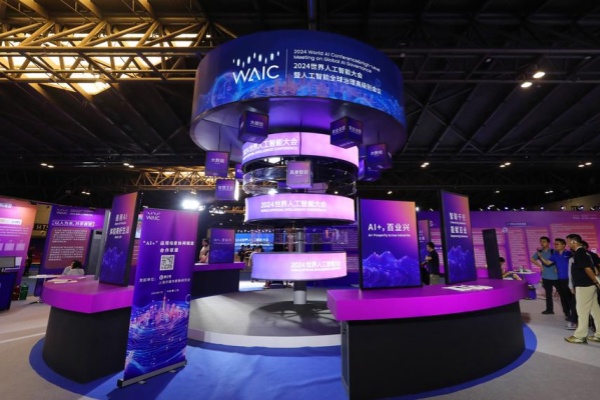
- Home
- Media Center
-
Events
- Wuzhen Summit
- Regional Forums
- Practice Cases of Jointly Building a Community with a Shared Future in Cyberspace
- World Internet Conference Awards for Pioneering Science and Technology
- The Light of Internet Expo
- Straight to Wuzhen Competition
- Global Youth Leadership Program
- WIC Distinguished Contribution Award
- Membership
- Research & Cooperation
- Digital Academy
-
Reports
- Collection of cases on Jointly Building a Community with a Shared Future in Cyberspace
- Collection of Shortlisted Achievements of World Internet Conference Awards for Pioneering Science and Technology
- Reports on Artificial Intelligence
- Reports on Cross—Border E—Commerce
- Reports on Data
- Outcomes of Think Tank Cooperation Program
- Series on Sovereignty in Cyberspace Theory and Practice
- Other Achievements
- About WIC
- 中文 | EN

Chinese companies develop AI video generation technology

This is a screenshot captured from a video generated by Vidu. Vidu, a large video generation model, developed by Chinese AI company ShengShu Technology and Tsinghua University, which features text-to-video and image-to-video generation, recently became available for global use. [Photo from ShengShu Technology]
BEIJING -- Several artificial intelligence (AI) video generation large models developed by Chinese tech companies have been made available to global users, providing Chinese equivalents of OpenAI's Sora.
The latest one, named Vidu, developed by Chinese AI company ShengShu Technology and Tsinghua University, became accessible worldwide on Tuesday, providing text-to-video and image-to-video generation functions.
This large AI model, unveiled in April at the 2024 Zhongguancun Forum in Beijing, now gives users access to creating a high-definition video of four seconds or eight seconds in 1080p resolution with a single click, said Tang Jiayu, co-founder and CEO of the company.
Tang said that such technology will revolutionize the content industry, including the film and television animation sectors.
"Over the next decade, the barriers to, as well as the costs of, film and television creation and production will be further reduced, with imagination and creativity better transformed into productive forces," he said.
It is not the first China-made AI video generator that has opened for global users. Last Friday, Beijing-based tech company Zhipu AI launched its large video generation model product, known as Ying.
This product enables video generation based on not only texts and images, but also video clips, said Zhang Peng, CEO of the tech company.
In June, the short video platform Kuaishou also launched a large video generation model called "KLING," which is capable of creating realistic motion scenes and accurate physics simulations in text-to-video and image-to-video generation.
Globally, there are already several technology companies working on text-to-video and image-to-video generation models. In China, mainstream AI video generation products adopt a structure that combines a deep learning model with a diffusion model, relying heavily on algorithms, computing power and data, according to Tang and Zhang.
Zhang admitted that domestic AI video generation technology is still in its infancy and imperfect, with a series of issues, such as high-quality data and algorithms, to be resolved.
"The best way to accelerate the development of AI is to parallel the research and development and the application of the technology, rather than keeping the technology locked in the laboratory and developing it in isolation," he said.
To date, China has filed and launched more than 180 AI generative content models that can provide services to the public, with registered users exceeding 564 million, Wang Jingtao, deputy director of the Cyberspace Administration of China, said at the 12th Internet Security and Artificial Intelligence Conference held on Wednesday in Beijing.

This photo shows an installation at the 2024 World AI Conference in Shanghai, east China, July 6, 2024. AI-powered products and applications have captivated lots of visitors during the 2024 World AI Conference. [Photo/Xinhua]
Huang Chengqing, vice president of the Internet Society of China, said with its groundbreaking progress in recent years, AI is transitioning from the innovative research and development stage to a stage of innovative application -- thereby empowering the real economy.
"It is accelerating from the forefront of science and technology to real productive forces, and is expected to drive the transformation of new production methods," said Huang.

The World Internet Conference (WIC) was established as an international organization on July 12, 2022, headquartered in Beijing, China. It was jointly initiated by Global System for Mobile Communication Association (GSMA), National Computer Network Emergency Response Technical Team/Coordination Center of China (CNCERT), China Internet Network Information Center (CNNIC), Alibaba Group, Tencent, and Zhijiang Lab.





